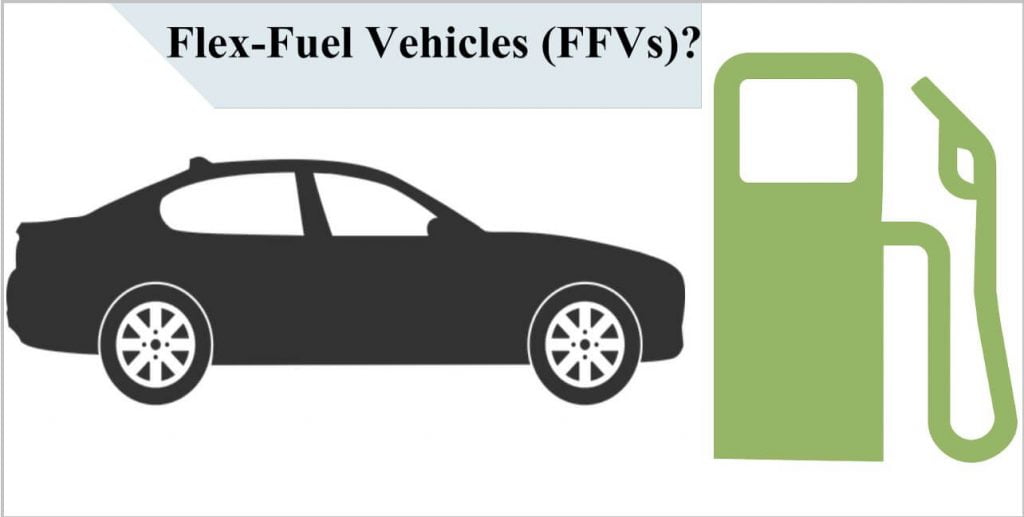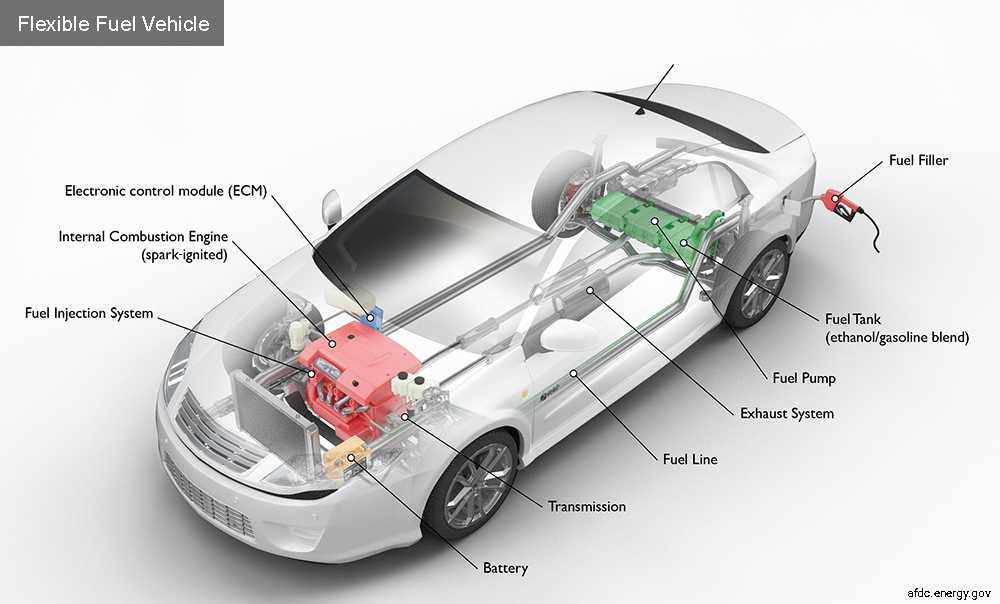
What is Flexible Fuel Vehicles ?
Flexible fuel vehicle is Modified version of vehicles that could run both on gasoline and doped petrol. FFV is an alternative fuel vehicle with an internal combustion engine designed to run on more than one fuel. It is also dual fuel vehicle. One fuel will be petrol and it can be blended with either Ethanol or Methanol fuel. Both fuels are stored in the same common tank.
According to Car Bible, Flexibility fuel vehicle technology is not new. It was first introduced in the early 1990s and used in the mass-produced in 1994 by Ford Taunur. By 2017, there were approximately 21 million flexible fuel vehicles on the road. Various countries of the world have been using it. Such FFVs are currently being successfully used in Brazil. Brazil Govt. Has given option to people to switch fuel ( Gasoline & Ethanol ), depending on price and convenience. In fact, most of the vehicles sold in Brazil are FFVs. The most common commercially available in the world market is the Ethanol Flexible Fuel Vehicles, with 60 million automobiles manufactured and sold worldwide by march 2018. FFVs are concentrated particularly in four markets of the world-
1. Brazil – 30.5 Million
2. USA – 21 Million
3. Canada – 1.6 Million
4. Europe, led by Sweden – 243100

Proposal of Flexible Fuel Vehicles in India
Petroleum Secretary Tarun Kapoor said,
” The use of Flexible Fuel Vehicles is being actively looked at by the Indian Government to ensure increased use of bio fuels for running vehicles, reduce the use of fossil fuels and cut down harmful emissions. “
According to the NITI Aayog report, FFVs have compatible engines to run on more than 84% ethanol blended petrol-proposed in view of the rising ethanol percent in petrol- so in a way it is a logical extension of the Ethanol Blended Petrol ( EBP ) programme.
Union Minister for Road Transport and Highways & MSME, Sh. Nitin Gadkari has urged car manufacturers to give priority to the indigenous production of flex engines, which can be used in the vehicles using alternative fuels such as Ethanol and Methanol.
Advantages of Flexible Fuel Vehicles

1. Environment Friendly
Flexible Fuel Vehicles contribute fewer Green House gases, making it more environmental friendly option than traditional gasoline because Ethanol burns cleaner than gasoline, which means Flexible Fuel Vehicles pump fewer toxic fumes into the environment.
2. Advanced Technology
Introduction of flexible fuel vehicles requires adaption of vehicle standards, Technologies and retrofitting configuration. Flexible Fuel Vehicles are built using Advanced Technology such as electronic sensors. These technical developments allow vehicles to adjust the its operating and detecting fuel blend and making any necessary adjustments.
3. Sustainably Produced
Flexible Fuel Vehicles run on Ethanol which is sustainably produced from cane sugar and corn. The production of Ethanol is a source of income for the farmers and Ethanol is an alternative to purchasing foreign fossil oil.
Disadvantages of Flexible Fuel Vehicles
1 – Possibility of Engine Damage
Ethanol absorbs dirt very easily, which can potentially corrode and damage the engine of the vehicles.
2. Reduction in Mileage-
Some experts assert that Flexible Fuel Vehicles have similar mileage as regular fuel powered vehicles but they have lower mileage than gasoline powered engines. It takes 1.5 times more to provide the same energy levels. Cheaper Ethanol but lower mileage.
3. Ethanol is Hygroscopic
Being an alcohol, Ethanol is Hygroscopic. It means that it absorbs water. The problem is that it continues to do so after it has been blended in other fuels. Now once it has come in contact with water, the contaminated part of the fuel settles at the bottom of the tank, and can end up causing serious damage to engine and injectors.
4. Shorter life than traditional gasoline
Ethanol is Hygroscopic and tends to evaporate faster than gasoline. So, it has a very short shelf life. It means that most blending will happen on a day- to -day basis from vendor outlets.
5. Sole crop use
Flexible Fuel can be sustainably produced using cane sugar and corn crops. Such crops designed to be used for Flex- Fuel production can’t be allocated to other uses and sources.
6. EBP – Ethanol Blended Petrol
The current regulation allow for mixing upto 10% ethanol in petrol and 10% blended petrol is available in 15 states of India while Bio-fuel in other states is between 0 to 5%. Flexible fuel vehicles will allow vehicles to use all the blended fuels and also run on unblended fuels. Different type of blended petrol can be used in vehicles. We are moving quickly in the direction of 20% ethinyl blended petrol fuel that could be introduced as early as 2024 -25. But in other countries like Brazil blending is about 85%.
7- Introduction of Electric Vehicles
Introduction of flexible fuel vehicles will bring other challenge for automobiles companies that they are already facing with the fast adaptation of electric vehicles. If standards for flexible fuel vehicles are made mandatory, it would require additional environment in production line and technology transfer. Already use of 15% EBP and BS VI fuel have added to the making a vehicles.